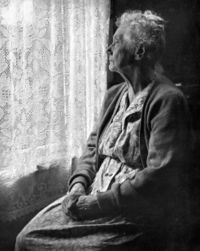Katz ADL
Top Contributors - Lucinda hampton, Lauren Lopez and Kim Jackson
Objective[edit | edit source]
The purpose of the Index of ADL, or KATZ ADL, is to monitor the prognosis and treatment of older adults and chronically ill people[1]. In particular, the KATZ ADL measures a person's independence in common activities of daily living (ADL).
Age-related changes and health problems frequently show themselves as declines in the functional status of older adults. This decline often places the older adult on a downwards health spiral. An effective way to evaluate the health status of older adults is through their functional ability. An objective assessment which provides objective data helps indicate decline or improvement in health status, allowing the physiotherapist to plan and intervene appropriately[2].
Intended Population[edit | edit source]
Older adults and individuals with chronic diseases.
Method of Use[edit | edit source]
The Katz ADL, is an appropriate tool to assess functional status when measuring the client’s ability to perform activities of daily living independently. It takes less than five minutes to perform and requires no training.
Physiotherapists use the tool when assessing function and detect problems in performing ADL and formulate a plan care. The Index ranks adequacy of performance in six functions: bathing, dressing, toileting, transferring, continence, and feeding. One point means the person is independent; zero points means the person requires supervision, direction, personal assistance or total care.
The following is referenced from McCabe[2].
BATHING
Points: __________
1 POINT: Bathes self completely or needs help in bathing only a single part of the body such as the back, genital area or disabled extremity.
0 POINTS: Need help with bathing more than one part of the body, getting in or out of the tub or shower. Requires total bathing.
DRESSING
Points: __________
1 POINT: Get clothes from closets and drawers and puts on clothes and outer garments complete with fasteners. May have help tying shoes.
0 POINTS: Needs help with dressing self or needs to be completely dressed.
TOILETING
Points: __________
1 POINT: Goes to toilet, gets on and off, arranges clothes, cleans genital area without help.
0 POINTS: Needs help transferring to the toilet, cleaning self or uses bedpan or commode.
TRANSFERRING
Points: __________
1 POINT: Moves in and out of bed or chair unassisted. Mechanical transfer aids are acceptable.
0 POINTS: Needs help in moving from bed to chair or requires a complete transfer.
CONTINENCE
Points: __________
1 POINT: Exercises complete self control over urination and defecation.
0 POINTS: Is partially or totally incontinent of bowel or bladder.
FEEDING
Points: __________
1 POINT: Gets food from plate into mouth without help. Preparation of food may be done by another person.
0 POINTS: Needs partial or total help with feeding or requires parenteral feeding.
TOTAL POINTS: ________ SCORING: 6 = High (patient independent) 0 = Low (patient very dependent)
Evidence[edit | edit source]
Reliability[edit | edit source]
The interrater reliability is 0.95 or better after training (1,4). The coefficient of reproducibility, (a measure of the internal consistency of an ordered measure), is 0.96 – 0.99
Validity[edit | edit source]
The Katz tool was originally developed in the late 1950s and has consistently demonstrated its utility in evaluating functional status in the elderly population.It is used extensively as a flag signalling functional capabilities of older adults in clinical and home environments.[2]
Construct validity. Scores on the Katz ADL Index are correlated with scores on the Barthel index (r 0.78, kappa 0.77).
Predictive validity. Correlation with mobility dysfunction (0.50) and house confinement (0.39) among older adult patients 2 years later.
Responsiveness[edit | edit source]
Sensitivity/responsiveness to change. This scale has a significant floor effect, in that it is relatively insensitive to variations at low levels of disability[4]
This occurs as it does not assess more advanced activities of daily living and it is limited in its ability to measure small increments of change seen in the rehabilitation of older adults. A comprehensive geriatric assessment should follow when appropriate. The Katz ADL Index is very useful in that is in a simple form all involved in a care plan can interpret.[2]
References[edit | edit source]
- ↑ Katz S, Ford AB, Moskowitz RW, Jackson BA, Jaffe MW. Studies of Illness in the Aged: The Index of ADL: A Standardized Measure of Biological and Psychosocial Function. JAMA. 1963;185(12):914–919.
- ↑ 2.0 2.1 2.2 2.3 McCabe D. Katz Index of Independence in Activities of Daily Living (ADL). Best Practices in Nursing Care to Older Adults. 2019. 2. Accessed 24 June 2019.
- ↑ Describing occupation. Katz ADL. Available from: https://www.youtube.com/watch?v=ekwu49fH5QM (last accessed 5.5.2019)
- ↑ 4.0 4.1 Katz P. Measures of Adult General Functional Status. Arthritis Care Res (Hoboken). 2003. 49; 5S: S15–S27. Accessed 24 June 2019.







